Waheeda Rehman: I feel fortunate to have worked with the top three – Dilip Kumar, Raj Kapoor, Dev Anand- #BigInterview – Times of India
December is a special month, marking as it does the death anniversary of Dev Anand and the birth anniversaries of Dilip Kumar and Raj Kapoor. Waheeda Rehman goes back in time and brings alive memories of this league of amazing gentlemen. “I feel l fortunate to have worked with the top three,” she says softly before she rewinds…
“Dilip Kumar could express so much emotion, so much dard”
Dilip saab and I did four films – ‘Dil Diya Dard Liya’ (1966), ‘Ram Aur Shyam’ (1967), ‘Aadmi’ (1968) and later ‘Mashaal’ (1984). Sadly, only ‘Ram Aur Shyam’ worked. However, it’s been an honour to have worked with such a great actor.
On the first day of shooting ‘Dil Diya Dard Liya’, I was naturally nervous about sharing the screen with Dilip saab. But he was a perfect gentleman, graceful and supportive. Dilip saab had a particular style of working. He’d do many rehearsals. He’d ask me to use glycerine even during the rehearsals to get the ‘total effect’. Unfortunately, glycerine didn’t suit my eyes. Sometimes, I’d get exhausted with the try-outs. So, I’d take a break, rest and then begin anew. Because the satisfaction of working with the best is something else. In a single close-up shot and without dialogue, he could express so much emotion, so much dard… he was fantastic!
Those days there were no vans. The make-up rooms and studios were in horrible condition. So, once we’d get ready, we’d prefer sitting on the set. It was the best place to chat, discuss our previous films and also new stories. Once Dilip saab had narrated a story idea about a young girl being buried in ice and discovered years later by her old lover. The story left me intrigued. While Dilip saab and Raj (Kapoor) saab would enjoy discussing concepts, Dev (Anand) saab largely remained quiet.

I was always interested in photography. I’d carry the camera around my neck – even when in full costume – and take interesting shots of my co-actors and things around. Dilip saab once chided me in jest saying, “Itne acche kapde pehenkar, kya ladkon ki tarah camera lekar ghoomti rehti ho! (Having worn such good clothes, why do you roam like a boy, carrying that camera around)”. On the other hand, Raj saab would be game. I was taking pictures while on our flight to Moscow. He suggested, “Go that side and take pictures. The light is better there.”
While shooting for ‘Dil Diya Dard Liya’, just to have some fun, we’d planned that each artiste would get lunch from home for the rest of the unit turn by turn. One day lunch came from Pran saab’s home, one day from mine and so on. But no lunch came from Dilip saab’s house. So, we teased him, “Hamein nahin pata tha aap itne kanjoos hai (We didn’t know you’re such a miser).” He sweetly smiled and said, “There’s no one at home to do that.” He was unmarried those days. I was glad when ‘Ram Aur Shyam’ clicked at the box-office. Koi toh picture chali unke saath (Atleast one movie with him became a hit)!
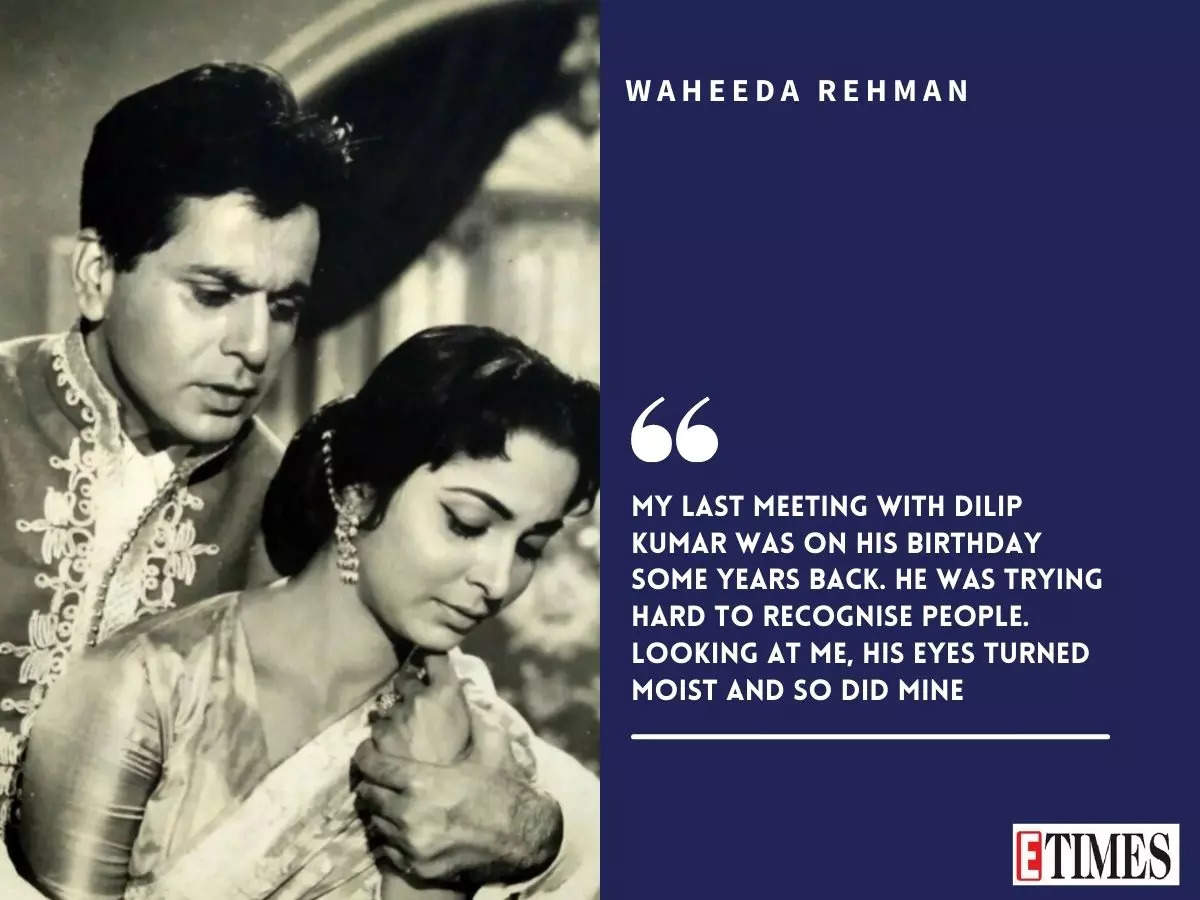
We worked together in ‘Mashaal’ after many years. He was mellow and quiet. The famous ‘Aye Bhai!’ scene was shot in Fort. I would be called at 8 pm. We’d shoot through the night till 5 am. I remember telling Yashji (Chopra) that I had children and it was difficult to work at night. But Yashji said the scene was such, we couldn’t shoot it in a crowd. The impact the scene created is still remembered.
My last meeting with Dilip saab was perhaps on his birthday some years back. He was trying hard to recognise people. He tried to place me too. Looking at me, his eyes turned moist and so did mine. He was truly extraordinary. Saira (Banu) looked after him so devotedly. Unko toh salaam karna chahiye (She deserves a salute). She’s truly the heroine of his life.
“Raj Kapoor may have had the reputation of being a ladies’ man, but he was so protective”
My first film with Raj saab was ‘Ek Dil Sao Afsane’ (1963). Unfortunately, it didn’t work. The second was ‘Teesri Kasam’ (1966). We were surprised that a glamorous man like Raj Kapoor had agreed to play a rustic character. Lyricist Shailendra, who produced ‘Teesri Kasam’, was Raj saab’s close friend. That’s why he agreed to do the film. Director Basu Bhattacharya also had great conviction in Raj saab.
Raj saab was always great company. In between shots, he’d narrate various story ideas including those of his future films ‘Mera Naam Joker’ (1970) and ‘Satyam Shivam Sundaram’ (1978). One day, something about the particular shot didn’t seem right. I told Raj saab why don’t you guide the director as he was a newcomer. Raj saab replied, “I agreed to be here as an actor. And I will behave like one. I don’t want the director to feel that I’m making a point to show I’m better than him.” That was a commendable quality in him.
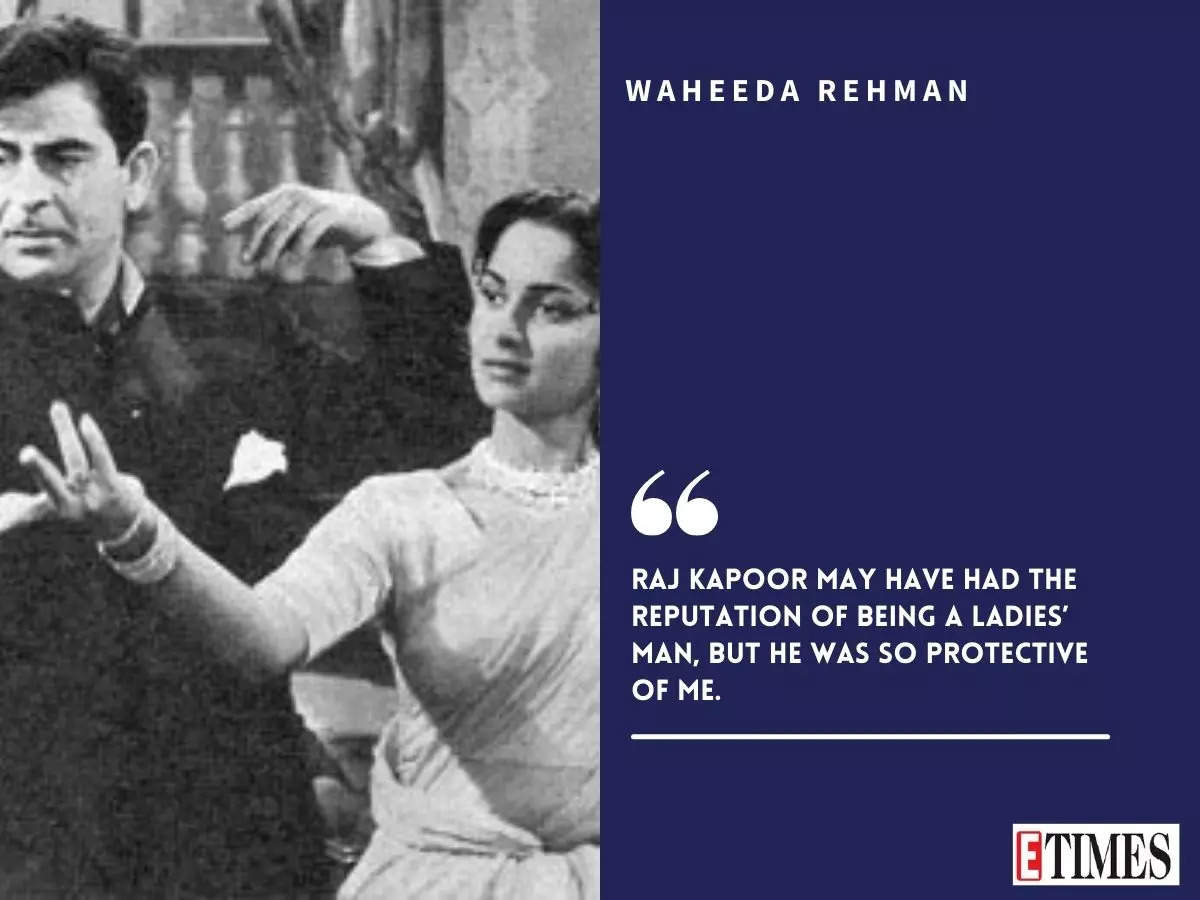
Raj saab’s idea was that my character Hirabai (a nautanki dancer) and his Hiraman (a bullock-cart driver) should meet in the end. He was in favour of a commercially viable ending. But I said a happy ending would not have justified the title ‘Teesri Kasam’. Hiraman’s ‘third promise’ was that he’d never again ferry a nautanki dancer. Also, if the ending were to be changed, the title would also have to be changed. Writer Phanishwarnath Renu (the film was based on his short story Mare Gaye Gulfam) was not in favour of changing the story or the title.
Even with a happy ending, the film would still have not worked it as it was too arty. Having said that, the cinematography by Subrata Mitra (part of Satyajit Ray’s team) was brilliant. He gave a beautiful soft effect to the film. ‘Teesri Kasam’ won the National Award for Best Feature film.
‘Teesri Kasam’ was also the special entry at the film festival in Moscow. Raj saab may have had the reputation of being a ladies’ man, but he was so protective of me. He cautioned me not to be too friendly with the interpreter and others around. He said caringly, “Malkin (the way he addressed me in ‘Teesri Kasam’) zara sambhal ke! Idhar udhar muskurate huwe mat chale jaana (madam, please be careful. Don’t get carried away flaunting your smiles)!” When I told him my sister was with me, he joked, “Sister ko pata bhi nahin chalega (Your sister won’t even know) when you will be carried away!” Though I enjoyed working with Raj saab, given the fact that we had two flops, our pairing was not repeated.
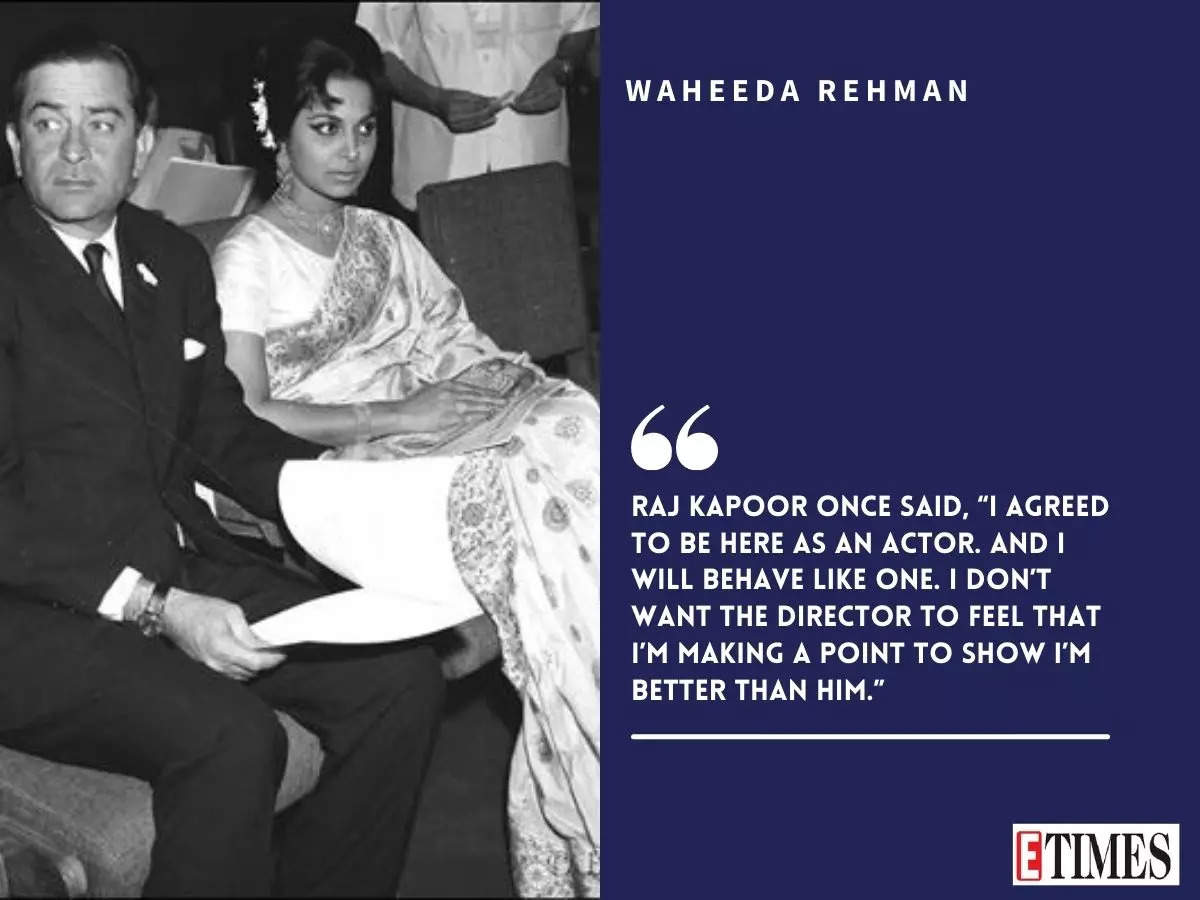
“I used to call Dev Anand a decent flirt”
I was a great fan of Dev saab even before I joined films. I loved his pairing with Madhubala. I had not imagined that I’d feature with him in my first Hindi film. I was introduced to Dev saab on the set of ‘C.I.D’ (1956) as the girl from Chennai. I addressed him as ‘Dev saab’. He reacted sharply, “No Dev saab!” I then asked, “Can I call you Anandji?” He retorted, “No, no… call me only Dev.” I said, “You’re my senior. How can I address you by your first name?” He explained he couldn’t work with anyone, who addressed him so formally.
The next day, aadat se majboor (out of habit), I addressed him as ‘Dev saab’. He didn’t respond even though he was within hearing distance. When this happened one more time, I asked him why he wasn’t answering. He said, “I told you no ‘saab’, no ‘ji’ and no ‘Mr’.” He was the only hero, who insisted I call him by his first name. Somewhere, he made me feel relaxed. We then went on to share a fine understanding, a comfort zone. I did seven films – the maximum I have done with any hero – with him.
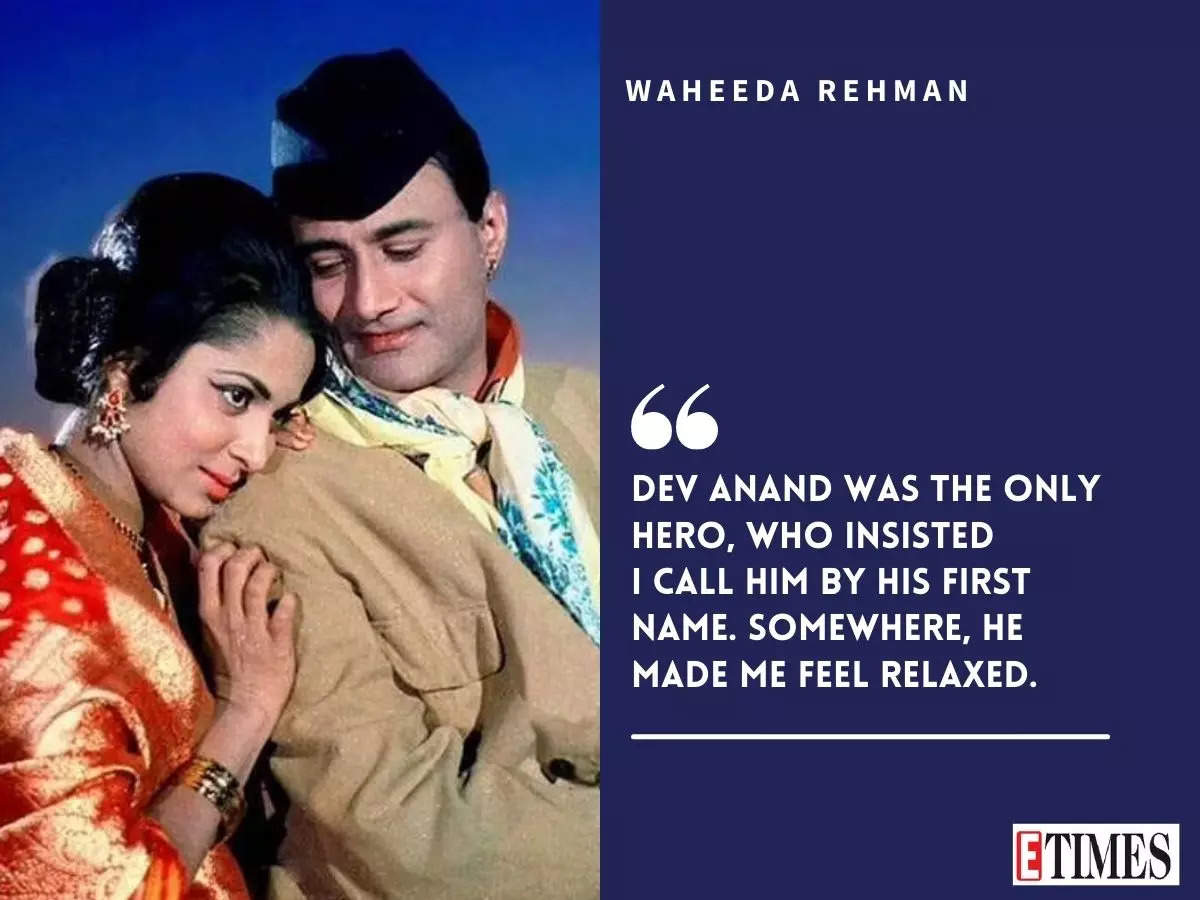
After ‘C.I.D’, I signed ‘Solva Saal’ (1958) and ‘Roop Ki Rani Choron Ka Raja’ (1961) with Dev saab. Around this time, my mother had a massive heart attack and passed away. I was devastated but work had to resume. My three older sisters were married and settled. I told Dev saab that I was feeling lonely and that I didn’t want to work anymore. I wanted to leave Mumbai. He said, “I understand your grief but time is a healer. And what’s the fault of the producers? Complete these two pictures and in the meantime decide your future.” He asked me if I wanted to get married and whether I had someone in mind. When I said no, he remarked, “Then why do you want to go back and live with your married sisters?” It made me think. Today, I value the good advice he gave me because it changed the course of my life.
A significant memory of our association is ‘Guide’ (1965). Several scenes remain memorable from the film. One such was the scene before the song Dil dhal jaaye, which sensitively hints at the growing distance between our characters, Raju and Rosie. Another was the scene just before the song Aaj phir jeene ki tamanna hai, shot on a sadak (street) in Udaipur. The scene has me telling Raju, “Ghungroo bandho!” Dev saab later told me, “I felt awkward shooting the scene in public. But you were so bindaas. Didn’t you feel conscious?” I said if I bothered so much it would have required so many retakes. I just switched on and off believing that just the two of us were there.
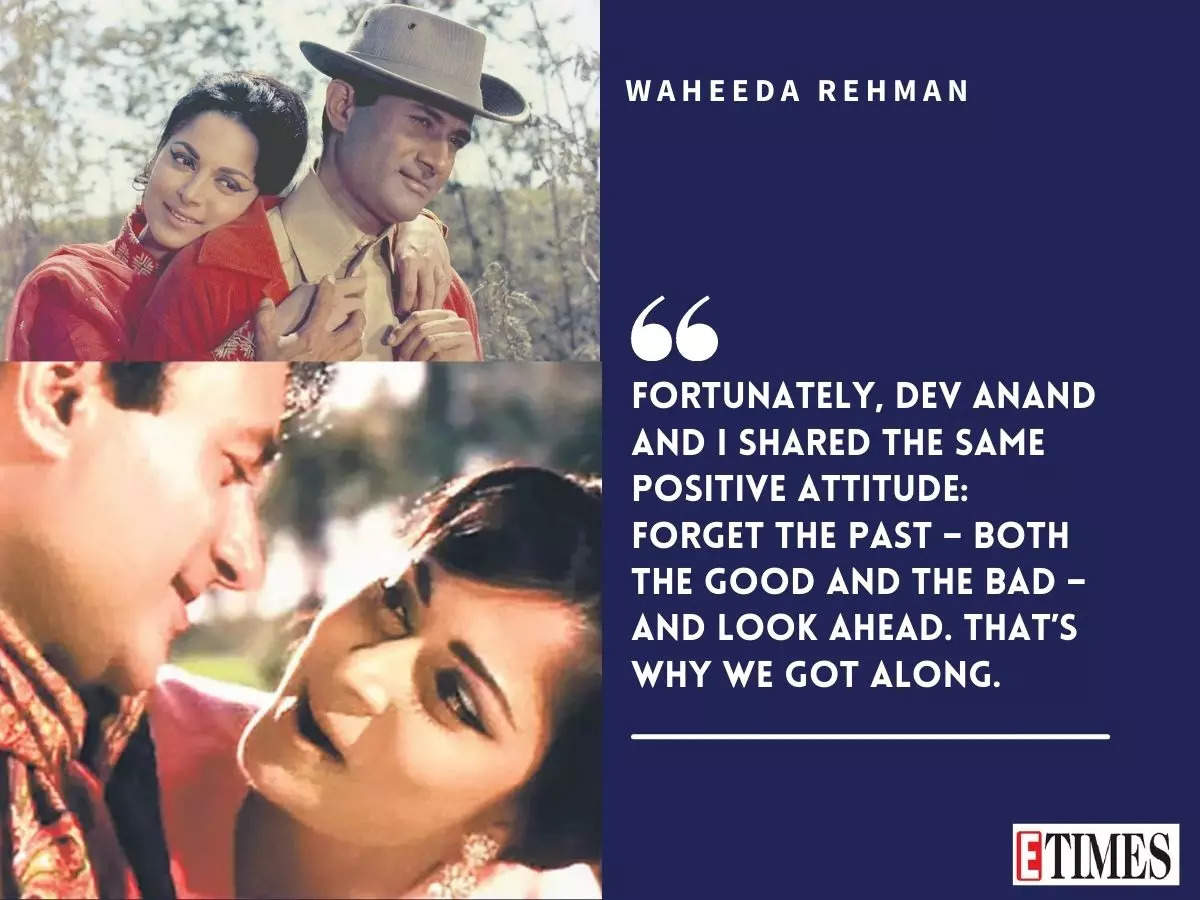
Whenever he met his heroines, including Nanda, Sadhana, Asha (Parekh) or me, Dev saab would affectionately put his hand on our shoulder. But we girls never minded it because he had such a clean vibe. But if others were to do so, we’d move back. The heroes would remark, “Arrey waah you don’t object to Dev saab. But when we come even a bit close, you move away.” Some people had a lecherous vibe. They wouldn’t leave your hand if they happened to hold it… but Dev saab gave you a safe feeling. That’s why I called him a ‘decent flirt’.
Till ‘Prem Pujari’ (1970), Dev saab carried the same youthful attitude. He had tremendous energy. I’d tease him saying he was like an ‘Eveready battery’, always charged. Fortunately, we shared the same positive attitude: Forget the past – both the good and the bad – and look ahead. That’s why we got along. When a film of ours had flopped, Dev saab said, “Irrespective of whether a film runs or not – there’s Dev Anand, there’s Waheeda Rehman. Your name and mine has been engraved on stone. Nobody can wipe it. So, move on and welcome the future.”
For all the latest entertainment News Click Here

